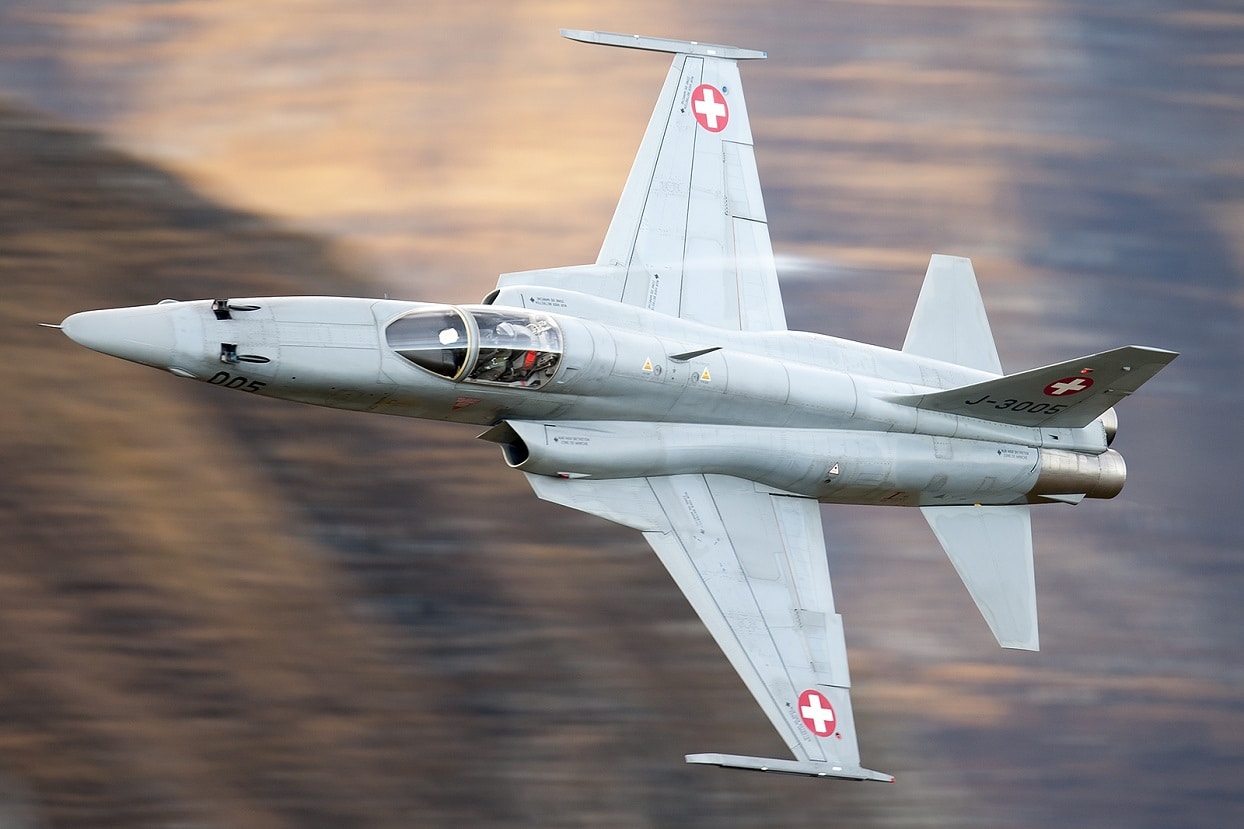The Pentagon and Northrop Grumman upgraded a 1960s-era fighter to counter the Soviet MiG-21 in the early 70s, building a new variant of the Northrop F-5 with more powerful engines, a larger airframe, and increased wing area to enable more maneuverability.
Making the F-5 Fly
The F-5 began as a Northrop project in the 1950s to build a supersonic, light fighter platform designed to be high-thrust, small, highly aerodynamic, and lower cost than other platforms at the time such as the F-4 Phantom II.
A lower-cost aircraft, if produced in sufficient quantities, can significantly improve the value of exporting a platform. This was the case with the F-5, which began as an internal private Northrop venture and then evolved into a critical Pentagon program to provide fighters to critical U.S. allies.
The initial concept for the aircraft was to engineer a lightweight, high-speed air fighter, yet the aircraft also demonstrated the ability to operate against ground forces.
Following the initial development of the F-5, Northrop later won the International Fighter Aircraft contract to engineer a follow-on aircraft that would advance the capability into a new era with improved air-to-air performance.
The intent was to ensure the lightweight, high-speed fighter could compete with the evolving Soviet MiG-21, which at the time was increasingly exported around the world.
The result of the effort was what became the F-5E and upgraded F-5E Tiger II, aircraft with more fuel capacity, air-to-air refueling, air-to-air and air-to-ground ability, improved avionics, and air-to-air radar. The aircraft is still operated by U.S. allies and in service as a trainer with the U.S. military.
The F-5E Tiger II was used extensively in Vietnam and, before production stopped in 1987, as many as 1,400 aircraft were built.
Looking at the F-5Es technologies and concepts of operation, it makes sense that the aircraft is credited with influencing future platforms such as the F/A-18 and the Northrop YF-17. Interestingly, the F-5 inspired the creation of Northrop’s F-20 Tigershark advanced follow-on variant which was ultimately canceled due to a lack of customers.
F-5E Tiger in Vietnam
In terms of concepts of operation, it makes sense that the F-5 would have influenced subsequent designs for years moving into the future as the Pentagon still greatly values light attack aircraft able to maneuver against air threats and also provide ground support at high speeds.
There is also a continued role for light attack aircraft able to support ground forces in a permissive or “less-contested” environment. The F-5’s lack of stealth would make it quite vulnerable in a great power engagement against advanced air defenses, yet there remain many areas of the world and potential warfare contingencies where a non-stealthy light attack is still very much in demand.
This is particularly true when it comes to Special Operations Forces and areas of the world where there may be counterinsurgency efforts able to benefit from airpower support. This has been the rationale for the current A-29 Super Tucano and other light attack aircraft platforms.
Kris Osborn is the Military Affairs Editor of 19FortyFive and President of Warrior Maven – Center for Military Modernization. Osborn previously served at the Pentagon as a Highly Qualified Expert with the Office of the Assistant Secretary of the Army—Acquisition, Logistics & Technology. Osborn has also worked as an anchor and on-air military specialist at national TV networks. He has appeared as a guest military expert on Fox News, MSNBC, The Military Channel, and The History Channel. He also has a Master’s Degree in Comparative Literature from Columbia University.
From 19FortyFive
The Second American Civil War Has Begun

